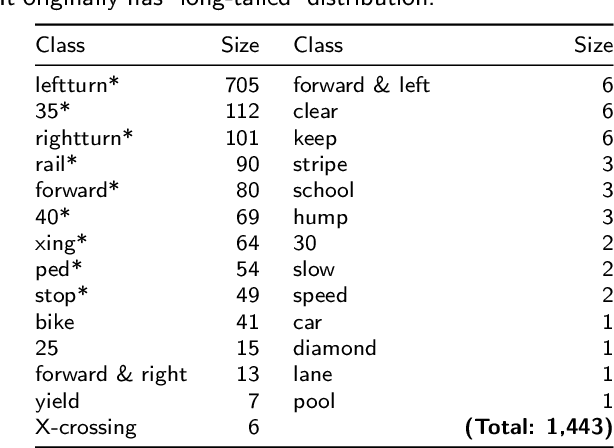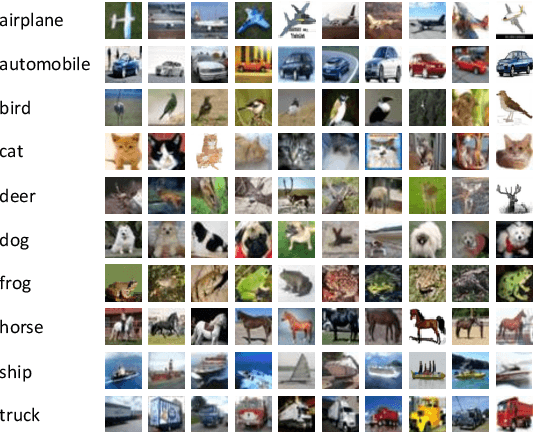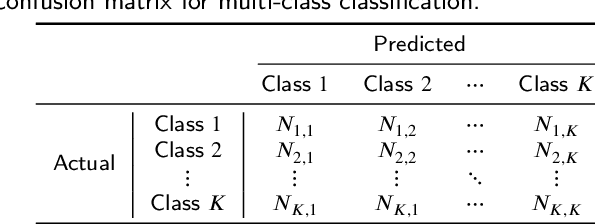Yechan Kim
Unlocking Robust Semantic Segmentation Performance via Label-only Elastic Deformations against Implicit Label Noise
Aug 14, 2025Abstract:While previous studies on image segmentation focus on handling severe (or explicit) label noise, real-world datasets also exhibit subtle (or implicit) label imperfections. These arise from inherent challenges, such as ambiguous object boundaries and annotator variability. Although not explicitly present, such mild and latent noise can still impair model performance. Typical data augmentation methods, which apply identical transformations to the image and its label, risk amplifying these subtle imperfections and limiting the model's generalization capacity. In this paper, we introduce NSegment+, a novel augmentation framework that decouples image and label transformations to address such realistic noise for semantic segmentation. By introducing controlled elastic deformations only to segmentation labels while preserving the original images, our method encourages models to focus on learning robust representations of object structures despite minor label inconsistencies. Extensive experiments demonstrate that NSegment+ consistently improves performance, achieving mIoU gains of up to +2.29, +2.38, +1.75, and +3.39 in average on Vaihingen, LoveDA, Cityscapes, and PASCAL VOC, respectively-even without bells and whistles, highlighting the importance of addressing implicit label noise. These gains can be further amplified when combined with other training tricks, including CutMix and Label Smoothing.
NSegment : Noisy Segment Improves Remote Sensing Image Segmentation
Apr 28, 2025



Abstract:Labeling errors in remote sensing (RS) image segmentation datasets often remain implicit and subtle due to ambiguous class boundaries, mixed pixels, shadows, complex terrain features, and subjective annotator bias. Furthermore, the scarcity of annotated RS data due to high image acquisition and labeling costs complicates training noise-robust models. While sophisticated mechanisms such as label selection or noise correction might address this issue, they tend to increase training time and add implementation complexity. In this letter, we propose NSegment-a simple yet effective data augmentation solution to mitigate this issue. Unlike traditional methods, it applies elastic transformations only to segmentation labels, varying deformation intensity per sample in each training epoch to address annotation inconsistencies. Experimental results demonstrate that our approach improves the performance of RS image segmentation on various state-of-the-art models.
Pallet Detection And Localisation From Synthetic Data
Mar 29, 2025Abstract:The global warehousing industry is experiencing rapid growth, with the market size projected to grow at an annual rate of 8.1% from 2024 to 2030 [Grand View Research, 2021]. This expansion has led to a surge in demand for efficient pallet detection and localisation systems. While automation can significantly streamline warehouse operations, the development of such systems often requires extensive manual data annotation, with an average of 35 seconds per image, for a typical computer vision project. This paper presents a novel approach to enhance pallet detection and localisation using purely synthetic data and geometric features derived from their side faces. By implementing a domain randomisation engine in Unity, the need for time-consuming manual annotation is eliminated while achieving high-performance results. The proposed method demonstrates a pallet detection performance of 0.995 mAP50 for single pallets on a real-world dataset. Additionally, an average position accuracy of less than 4.2 cm and an average rotation accuracy of 8.2{\deg} were achieved for pallets within a 5-meter range, with the pallet positioned head-on.
NBBOX: Noisy Bounding Box Improves Remote Sensing Object Detection
Sep 14, 2024



Abstract:Data augmentation has seen significant advancements in computer vision to improve model performance over the years, particularly in scenarios with limited and insufficient data. Currently, most studies focus on adjusting the image or its features to expand the size, quality, and variety of samples during training in various tasks including object detection. However, we argue that it is necessary to investigate bounding box transformations as a model regularization technique rather than image-level transformations, especially in aerial imagery due to potentially inconsistent bounding box annotations. Hence, this letter presents a thorough investigation of bounding box transformation in terms of scaling, rotation, and translation for remote sensing object detection. We call this augmentation strategy NBBOX (Noise Injection into Bounding Box). We conduct extensive experiments on DOTA and DIOR-R, both well-known datasets that include a variety of rotated generic objects in aerial images. Experimental results show that our approach significantly improves remote sensing object detection without whistles and bells and it is more time-efficient than other state-of-the-art augmentation strategies.
Rethinking Feature Backbone Fine-tuning for Remote Sensing Object Detection
Jul 21, 2024Abstract:Recently, numerous methods have achieved impressive performance in remote sensing object detection, relying on convolution or transformer architectures. Such detectors typically have a feature backbone to extract useful features from raw input images. For the remote sensing domain, a common practice among current detectors is to initialize the backbone with pre-training on ImageNet consisting of natural scenes. Fine-tuning the backbone is typically required to generate features suitable for remote-sensing images. However, this could hinder the extraction of basic visual features in long-term training, thus restricting performance improvement. To mitigate this issue, we propose a novel method named DBF (Dynamic Backbone Freezing) for feature backbone fine-tuning on remote sensing object detection. Our method aims to handle the dilemma of whether the backbone should extract low-level generic features or possess specific knowledge of the remote sensing domain, by introducing a module called 'Freezing Scheduler' to dynamically manage the update of backbone features during training. Extensive experiments on DOTA and DIOR-R show that our approach enables more accurate model learning while substantially reducing computational costs. Our method can be seamlessly adopted without additional effort due to its straightforward design.
Imbalanced Image Classification with Complement Cross Entropy
Sep 04, 2020



Abstract:Recently, deep learning models have achieved great success in computer vision applications, relying on large-scale class-balanced datasets. However, imbalanced class distributions still limit the wide applicability of these models due to degradation in performance. To solve this problem, we focus on the study of cross entropy: it mostly ignores output scores on wrong classes. In this work, we discover that neutralizing predicted probabilities on incorrect classes helps improve accuracy of prediction for imbalanced image classification. This paper proposes a simple but effective loss named complement cross entropy (CCE) based on this finding. Our loss makes the ground truth class overwhelm the other classes in terms of softmax probability, by neutralizing probabilities of incorrect classes, without additional training procedures. Along with it, this loss facilitates the models to learn key information especially from samples on minority classes. It ensures more accurate and robust classification results for imbalanced class distributions. Extensive experiments on imbalanced datasets demonstrate the effectiveness of our method compared to other state-of-the-art methods.
 Add to Chrome
Add to Chrome Add to Firefox
Add to Firefox Add to Edge
Add to Edge